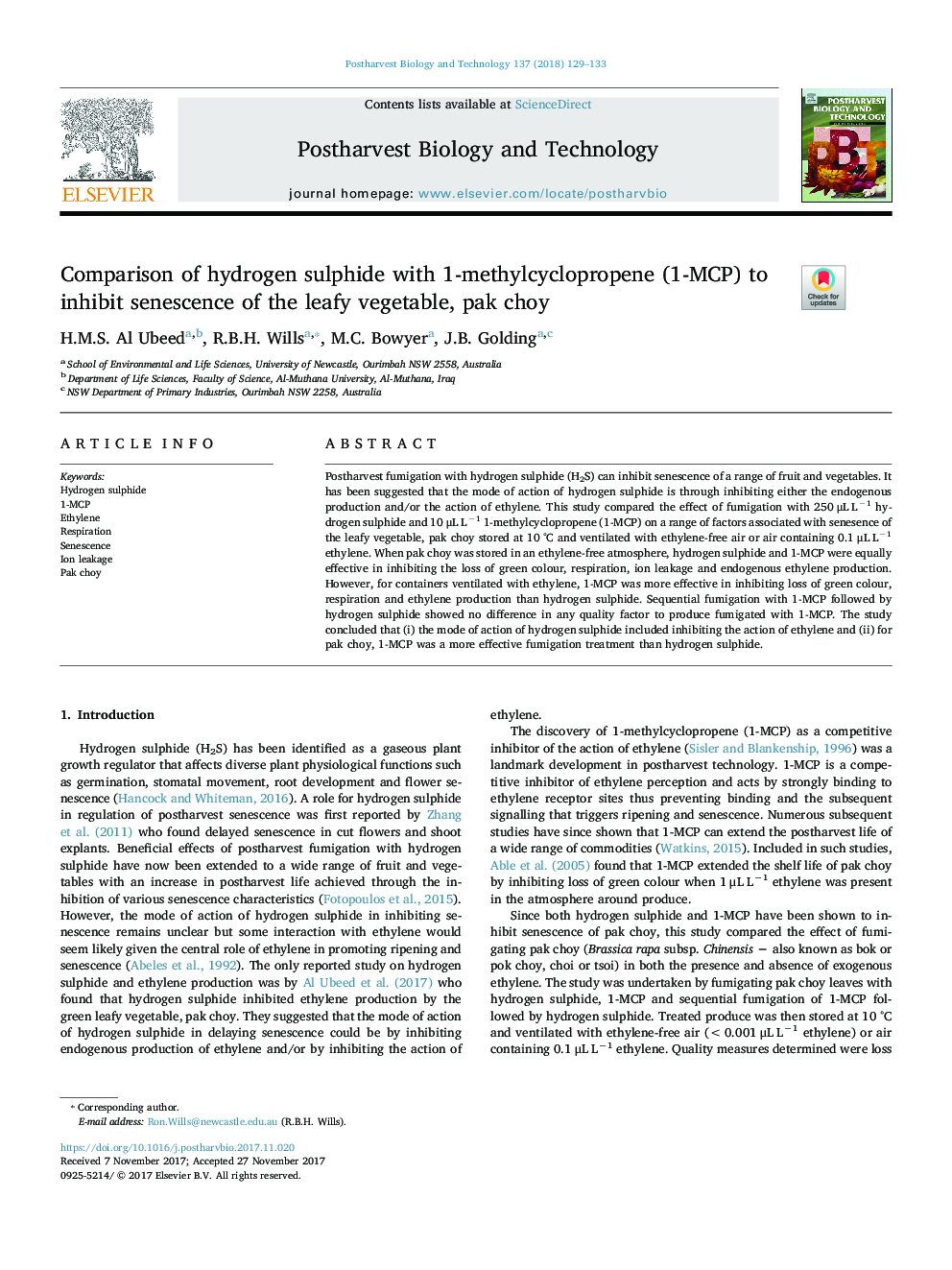| Article ID | Journal | Published Year | Pages | File Type |
|---|---|---|---|---|
| 8882033 | Postharvest Biology and Technology | 2018 | 5 Pages |
Abstract
Postharvest fumigation with hydrogen sulphide (H2S) can inhibit senescence of a range of fruit and vegetables. It has been suggested that the mode of action of hydrogen sulphide is through inhibiting either the endogenous production and/or the action of ethylene. This study compared the effect of fumigation with 250 μL Lâ1 hydrogen sulphide and 10 μL Lâ1 1-methylcyclopropene (1-MCP) on a range of factors associated with senesence of the leafy vegetable, pak choy stored at 10 °C and ventilated with ethylene-free air or air containing 0.1 μL Lâ1 ethylene. When pak choy was stored in an ethylene-free atmosphere, hydrogen sulphide and 1-MCP were equally effective in inhibiting the loss of green colour, respiration, ion leakage and endogenous ethylene production. However, for containers ventilated with ethylene, 1-MCP was more effective in inhibiting loss of green colour, respiration and ethylene production than hydrogen sulphide. Sequential fumigation with 1-MCP followed by hydrogen sulphide showed no difference in any quality factor to produce fumigated with 1-MCP. The study concluded that (i) the mode of action of hydrogen sulphide included inhibiting the action of ethylene and (ii) for pak choy, 1-MCP was a more effective fumigation treatment than hydrogen sulphide.
Related Topics
Life Sciences
Agricultural and Biological Sciences
Agronomy and Crop Science
Authors
H.M.S. Al Ubeed, R.B.H. Wills, M.C. Bowyer, J.B. Golding,
